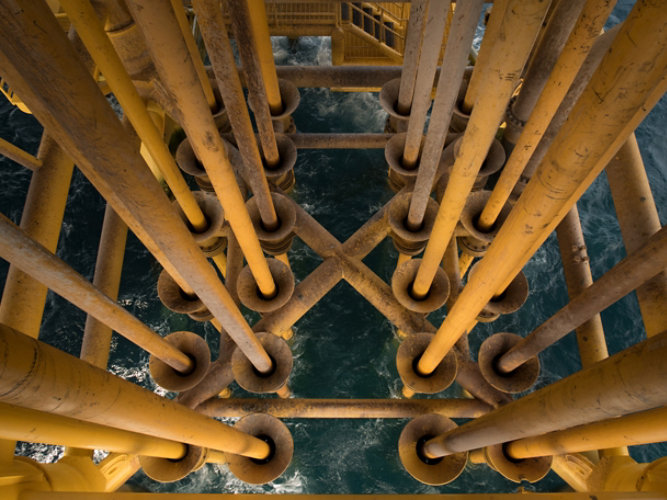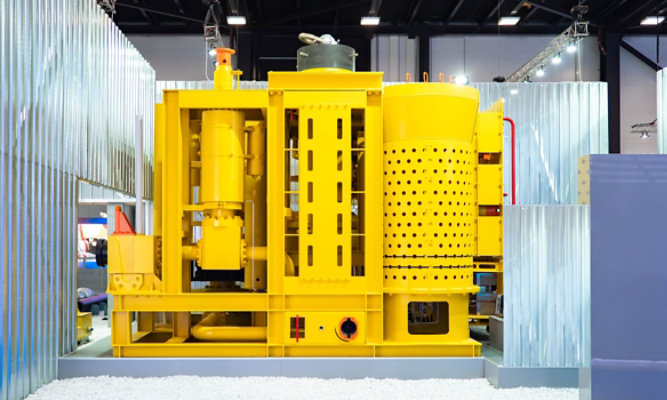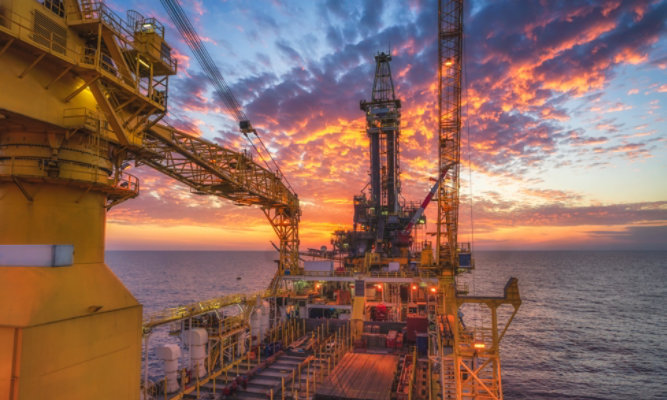Drilling Deeper Under the Sea with HOT Pipeline Coatings
High operating temperature (HOT) coatings enable limit-pushing exploration activities and allow for reel-lay applications
By Dr. Jeffrey David Rogozinski, Global Product Director – Fusion-Bonded Epoxy/Pipe, Sherwin-Williams Protective & Marine

As subsea oil and gas exploration activities seek to draw raw materials from deeper and deeper oil fields, today’s extraction technologies are being pushed to their limits. Wells drilled ever deeper beneath the seafloor are facing elevated temperatures and pressures that may exceed the qualifications of the equipment being used. That includes the limits of the traditional coatings used to protect subsea equipment and pipelines from deterioration in corrosive seawater.
Elevated temperatures from hotter extracted fluids can be especially detrimental to coatings applied to the undersea pipelines that link subsea tiebacks to fixed and floating platforms. Older fusion-bonded epoxy (FBE) coatings used to protect pipes from corrosion cannot handle that additional heat exposure, making them prone to failure, which in turn threatens pipeline safety. However, recent advancements have seen newer high operating temperature (HOT) FBEs enable higher temperature extractions. Such coatings are currently able to accommodate pipeline temperatures up to 180°C (356°F), but they’re expected to handle even higher temperatures in the near future.
The enhanced capabilities of HOT FBE coatings are enabling limit-pushing exploration activities to continue, helping the oil and gas industry develop new oil fields that were previously off limits. This wouldn’t be possible without coatings formulators making a variety of molecular-level changes to FBEs. These changes have helped to increase the glass transition (Tg) temperature of the coatings, boost their flexibility, improve their crosslink density and enhance their damage resistance. Not only do these advanced properties enable operators to drill deeper wells and extract hotter materials, but the coatings can also allow producers to reel-lay pipe for more efficient pipeline installations compared to traditional S-lay and J-lay methods.
Higher Glass Transition Temperatures (Tg)
The temperature of contents extracted from the earth rises about 25°C (77°F) for each kilometer of depth drilled. Until recently, older FBEs could only accommodate operating temperatures up to about 110°C (230°F). So when the oil and gas industry wanted to go deeper, the coatings industry had to catch up with its technology. Achieving the current upper limit of 180°C means producers can now drill much deeper than before. That depth may be further extended with coatings rated to 200°C (392°F) likely coming to market soon and those allowing even greater temperatures currently in development.
To achieve these higher temperature ratings, coatings manufacturers are manipulating FBE molecules to increase their glass transition temperatures (Tg), while also balancing other properties. The Tg of a coating is the temperature at which the coating changes from a rigid material to a softer material. The coating doesn’t melt at this point, but it becomes softer and pliable and loses some physical properties. In this softened state, the coating is susceptible to degradation, loss of adhesion, disbondment and ultimately premature failure. Therefore, pipeline operators should not run pipelines above the design temperature of the applied protective FBE coatings. In fact, they should specify coatings that have transition temperatures at least 5-10°C (9-18°F) above the highest anticipated operational temperature of the pipe. This buffer will allow the coatings to remain hard and glasslike for better adhesion and performance.
Greater Flexibility
As coatings manufacturers make molecular-level changes to FBEs to adjust their properties, they often need to make some trade-offs. Increasing the Tg of an FBE coating, for example, may sacrifice some of the coating’s flexibility. However, despite having higher Tg values, newer HOT FBE coatings are able to maintain a high degree of flexibility. That flexibility is especially important for enabling pipeline installation efficiencies and cost savings.
Because today’s HOT FBEs remain highly flexible after application and curing, pipeline operators are able to take advantage of the inherent efficiencies associated with reel-laying pipes. Instead of undergoing the costly and time-consuming process of welding each 40-foot long pipe section and coating the field joints from a barge as they do in traditional S-lay and J-lay pipeline installations, installers are able to keep nearly all of that process onshore. They’re able to prepare about a kilometer of pipeline in a more controlled environment onshore, and then reel it onto large spools that are used to reel-lay the pipe offshore. The only welding and field joint coating required from a barge is when installers need to connect another kilometer-long section of pipeline. This process is significantly more streamlined and less costly compared to performing all of the work offshore. In addition, the flexibility of the HOT FBE coatings allows the pipe to be rolled and unrolled multiple times without worry that the coating will crack or break from the flexion stresses.
Enhanced Barrier Properties
Another advantage the higher Tg values offer for HOT FBEs is greater crosslink density within the coatings. The cured, glass-like coatings are able to maintain tightly linked structures within their coating matrices. The tighter the matrix, the harder it is for molecules of water, electrolytes, oxygen and other moieties that contribute to corrosion to work their way into and through the coating to reach the steel pipe substrate. Keeping those corrosive elements away from the steel is critical to the long-term performance of a pipeline.
The characteristics that enable coatings to prevent molecules from penetrating their structures are known as barrier properties. Such properties can be measured by testing water vapor transmission rates (WVTR) and various diffusion rates through the coating matrix in a lab. As proven via such testing, newer, HOT FBEs provide a very strong barrier against a wide variety of elements.
Increased Damage Resistance
As noted earlier, some trade-offs may occur when adjusting FBE molecules to enable higher Tg temperatures. Among them, the damage resistance of the coating may become better or worse depending on the balance between the Tg and flexibility of the coating. Surprisingly, to protect coatings from damage related to impacts, gouges and abrasions, it’s better for the coating to retain a degree of flexibility than to be extremely hard. This flexibility enables the coatings to “give” when an impact occurs. The force of the impact is able dissipate within the FBE matrix instead of being relieved by forming a crack in the coating. Newer HOT FBE coatings with higher Tg values remain somewhat flexible, while retaining a highly crosslinked structure due to molecular level composites, making them highly resistant to damage.
Striking a Balance
The key to successfully exploring deeper oil fields lies in the development of advanced coatings that can handle the greater operating temperatures these activities face. That means finding the right balance of coating properties that enable higher Tg values, enhanced flexibility, better barrier properties and improved damage resistance for the pipelines that will move the very hot extracted materials. Today’s newer HOT FBEs are striking the right balance of properties to enable offshore exploration into untapped areas, deeper well drilling and hotter material extractions. Further, they’re also enabling the welcome efficiencies and cost savings associated with reel-lay applications.
ABOUT THE AUTHOR
Dr. Jeffrey David Rogozinski is Global Product Director – Fusion-Bonded Epoxy/Pipe for Sherwin-Williams Protective & Marine. With more than 30 years’ experience in coatings and academia, he is responsible for developing protective coatings, powder coatings, resins and additives for the oil and gas, pipeline, and bridge and highway markets. His coatings science emphasis is on researching and testing polymer synthesis and structure-property characterization. He is a member of several coatings associations and a consultant for global specification writing for CSA Group, the International Organization for Standardization (ISO), ASTM International, NACE International and others. Rogozinski holds a doctorate in applied science for polymer and composite chemistry. He can be reached at Jeffrey.Rogozinski@sherwin.com.
Discover More
Industry Expertise and Innovation
See how we help customers find customised solutions for their project and application challenges.
Our Oil & Gas Expertise
Explore our industry solutions and technology to help protect your assets.
LEARN MOREProduct Lookup
Find out more about our innovative coatings for a variety of industries.
FIND A PRODUCT


